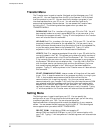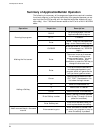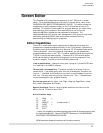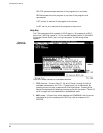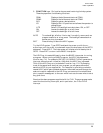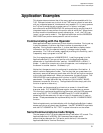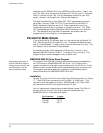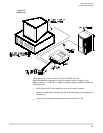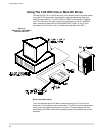
3. FUNCTION keys. Six function keys are active during the help system.
These keys perform the following functions:
COM1 Displays the buffers and status of COM1.
COM2 Displays the buffers and status of COM2
SYS Displays system related status.
I/O Displays 8-bit I/O positions and allows the operator to
change them.
LITE Select LCD backlight auto shutdown, ON, or OFF.
ON Leaves the backlight on at all times.
OFF Leaves the backlight off at all times.
AUTO Turns backlight off after 10 minutes if no activity occurs such as
program execution or a key press. The backlight comes back on
as soon as a key is pressed.
EXIT Press this key to leave the HELP system.
Try the HELP system. Type GOTO and back the cursor up with the or -
cursor keys until the cursor is underneath one of the characters of the GOTO
statement. Press HELP. The help screen will display a brief description of
GOTO. Press EXIT to return to the BASIC Interpreter.
The HELP key is treated differently when the BASIC Interpreter is running
a program. When running a BASIC program, the HELP key becomes a
function key, F10. For example, ON KEY (10) GOSUB T-60 will generate an
interrupt subroutine call to location 1000 when the HELP key is pressed.
Think of the HELP key as a “pre-labeled” function key, F10. By keeping
track of the operational status of your program you can generate context
sensitive HELP for your application. For example, by providing a variable
named HELP which gets updated whenever the screen contents change, the
subroutine which responds to the HELP key can examine this variable and
print a specific message out to the user which instructs the user what to do at
any given time.
Examine the demo programs supplied with the T-60. These programs make
use of the function key interrupts, and in particular, the F10 or HELP
interrupt.
Screen Editor
Editor Capabilities
29




